#Marius Petipa Choreographer
Text
Ballet in the Media
Hey guys, I know this is a long-awaited list. This post contains books, news sources, and forums that focus on ballet. Obviously, this list contains official/public sites only. Suggestions about sites or titles to add are always welcome. In the future, I want to expand the list to include documentaries.
Books
(This section is limited to English for now)
History/Criticism
Bolshoi Confidential: Secrets of the Russian Ballet by Simon Morrison
Apollo's Angels: A History of Ballet by Jennifer Homans
The Ballet Lover by Barbara L. Baer
Celestial Bodies: How to Look at Ballet by Laura Jacobs
The Great History of Russian Ballet by Evdokia Belova
Ballet in Western Culture: A History of Its Origins and Evolution by Carol Lee
Behind the Scenes at the Ballets Russes: Stories from a Silver Age by Michael Meylac
Diaghilev’s Ballets Russes by Lynn Garafola.
Technique/Pedagogy
Foundations of Classical Ballet by Agrippina Vaganova
100 Lessons in Classical Ballet: The Eight-Year Program of Leningrad's Vaganova Choreographic School by Vera S. Kostrovitskaya
The Cecchetti Method of Classical Ballet: Theory and Technique by Cyril W. Beaumont
Classical Ballet Technique by Gretchen Ward Warren
Ballet Pedagogy: The Art of Teaching by Rory Foster
Technical Manual and Dictionary of Classical Ballet by Gail Grant
Dance Anatomy by Jacqui Haas
(Auto) Biography
A Body of Work by David Hallberg
Marius Petipa: The Emperor’s Ballet Master by Nadine Meisner
Nureyev: The Life by Julie Kavanagh
Dancer by Colum McCann
Dancing on My Grave by Gelsey Kirkland
Winter Season by Toni Bentley
Swan: The Life and Dance of Anna Pavlova by Laurel Snyder
Holding On to the Air by Suzanne Farrell
Mao's Last Dancer by Li Cuxin
Publications:
Dance Media Publications (Dance Magazine, Pointe etc)
Ballet Focus
Dance Europe
Site of Alastair Macaulay
Danser (French)
Ballet 2000 (Italian/French)
Granmilano (English/Italian)
Danza e Danza (Italian)
Opera Click (Italian)
Vogue ITA: Valentina Bonelli (Italian)
La Notte (English/Italian)
Vaganova Today (English/Russian)
Ballet Magazine Russia (Russian)
La Personne (Russian)
Kultura "Culture" (Russian)
Forums:
Ballet Alert
Ballet Talk for Dancers
Ballet Co
Ballet and Opera Friends (Russian)
Passion Ballet (Russian)
Dansomanie (French)
Danza World (Italian)
Opera Click (Italian)
109 notes
·
View notes
Text
Vaganova Graduation Performances….
This is not my opinion, I'm just copying and pasting from a forum, so take it all with a grain of salt. But this is some random person's impression that I wanted to share. Given that it was posted in a forum, it's probably okay to disseminate here. Translated by my browser so forgive the poor translation. Not sure why some names are in bold.
What seems to have been buried is that Farouk Ruzimatov's son is graduating this year! I had no idea!
From the Russian dance forum Ballet Friends, user Marfa:
08\06\2023 - MT GRADUATION PERFORMANCE OF THE ACADEMY OF RUSSIAN BALLET NAMED AFTER A. Me. VAGANOVA 281 ISSUE
Mariinsky Theatre Symphony Orchestra
Conductor - Arseny Shuplyakov
IN THE PROGRAM:
Suite from the ballet Corsair. "The Lively Garden"
Music by Adolf Adam, Julius Gerber, Leo Delibes, Riccardo Drigo, Peter of Oldenburg, Caesar Puni, Albert Zabel
Choreography by Marius Petipa, Reconstruction and new choreographic edition of Yuri Burlaka, Suite compiled by Nikolai Tsiskaridze (2023)
Suite of characteristic dances from the ballet "Laurencia"
Music by Alexander Crane
Choreography by Vakhtang Chabukiani, Dancing restored by Irina Gensler (2015), Suite composed by Nikolai Tsiskaridze (2015)
Costume designer - Simon Virsaladze
Kovalev
Valiullina, Gureeva, Ermolaeva, Hare, Ivanova, Koshkareva, Davleeva, Prokopenko, Saplina, K. Kholodkova, P. Kholodkova, Sabanova, Grimm (USA).
Kasenkova
Aseeva, Vennitskaya, Ermolenko, Zeldina, Karamysheva, Kulikova, Kuprina, Potapova, Mor (Israel), Rissanen (Finland), Sharova
Ilyin
Gasparyan, Egorov, Kamenskikh, Mukhametshin, Ruzimatov, Karsel (Spain), Kodama-Pomfret (Great Britain)
Ermolenkov
Asadchenko, Gariffulin, Gobov, Didenko, Dobosch (Romania), Mikheev, Trunin, Chabron (France), Brancato (USA)
singled out those who participated in the concert and was noted in the program
The audience gathered interested, caring, friendly.
As always, teachers are in the tutoring room. The concert traditionally began with a welcoming speech by the rector, who, as usual, was a combination of black and white. He said that this graduation party is dedicated to Natalia Dudinskaya, who has done so much for our ballet. He said thank you to the teachers and wished both the audience and graduates a good evening.
Suite from the ballet Corsair. "The Lively Garden" was made up of
Waltz performed by students
Big Adagio, in which Medora - Kuprin, Gulnara - Barinov framed by corps de ballet were soloed
Trio of odalysok - Kotlyarova, Romanovich, Morozova
Dancing with baskets - senior students
Variations of the soloist - Rissanen
Variations of Gulnara - Barinov
Variations of two soloists - Solomina, Chobota (Romania)
PAS DE DEUX - Koshkareva, Kodama-Pomfred (UK)
Intermezzo students
Variations of Medora - Kuprin
Koda - students
Everything is very beautiful, gentle, the corps de ballet looks marshmallow, there are younger students in the form of arapchat for splendor. Branches-wrears of roses, at the end of Medora - Koshkarev is placed on a pedestal in the form of a large basket of roses.
Kuprina and Barinova danced charmingly from beginning to end, with corps de ballet, that solo. Barinova, in my opinion, looked no worse than Kuprin's produced.
I liked Morozov the most of the odalys. The packs are beautiful, similar to thin embroidered lace.
Rissanen, of course, is quite a baby, with a strong body, but very cute and danceable, charming.
The central number of PAS DE DEUX, in which Kodama-Pomfred danced brilliantly like an adult, both variations were breathtaking, high, flying, with beautiful landings, emotionally just like Kim. He was met with violent prolonged applause. In my opinion, Koshkareva looked pale next to him, there was not so much emotional return. In the fuet, I drove a lot forward, and then also sideways. According to the ballerina type, Matvienko reminded me.
We received everyone very warmly. But it was Kodama-Pomfred who got the most. I really want his fate to develop, despite his not very tall height. He and his mother gave so much effort and money that he could get an education in the ARB, saw them collect donates through the social network to pay for education. It looks like my mother was at the concert and was just very happy with what she saw. I liked him very much.
Suite of characteristic dances from the ballet "Laurencia"
I saw her in 2015, then Shakirova and Borsai soloed. Full list https://marfa-ssv.livejournal.com/42351.html, there are many familiar surnames.
Valiullina - Laurencia, Dobosh (Romania) - Frondoso,
Alferov - Estevan, father of Laurencia, Chuzhanov - Juan, father of Frondoso,
Kulikova - Pasquala, Ilieva (Bulgaria) - Khasinta,
Asadchenko - Ortuño, Garifullin - Flores.
Girls: Zatoka, Gureeva, Palilionis, Karamysheva.
Flamenco: Davleeva (soloist), Efimova, Zeldina, Lavrentiev, Tikhomirov and senior students.
Dance with castanets: Morozova (soloist), Didenko (soloist), Saplina, Kalashnikova, Ermolenko, Ruzimatov, Mukhametshin, Trunin and senior students.
I looked with interest and with memories of 2015. I liked the whole collective characteristic part very much. A very temperamental bright soloist in Flamenco, it seemed to me that there was a problem with the shawl, but she did great. The two artists in black shawls had them dressed on different sides (one stripes up, the other inside out) is interestingly designed or a mistake? I remembered Olga Makarova, the heiress of a high-profile ballet surname who danced this part, it seems to me that the career of an artist in NOVAT did not work out very well, but Ksenofontov, who was not even a soloist in this dance, is now experiencing a rise there.
In the castanets dance, I again liked Morozova, who danced odalisk in the first part. She was successful in both classical and characteristic images.
I really liked Asadchenko and Gariffulin, thin-legged slender, terribly synchronous, light. Just a pleasure for the eyes.
Kulikova and Pascuala are cute. Valiullina certainly stands out for her stage charm, but she was less amazed than Raymonda last year. Dobosh didn't hit anything special.
8 notes
·
View notes
Text


Angelina Vorontsova as Kitri and Denis Rodkin as Miguel Basilio, “Don Quixote”, libretto by Marius Petipa based on the novel “El Ingenioso Hidalgo Don Quijote de la Mancha” (“The Ingenious Nobleman Sir Quixote of La Mancha”) by Miguel de Cervantes Saavedra (1547-1616), choreography by Marius Petipa and Alexander Gorsky, performance also features choreography by Nina Anisimova, Igor Belsky, Robert Gerbek, Kasyan Goleizovsky and Fyodor Lopukhov, overall choreographic revision and staging by Mikhail Messerer, music by Ludwig Minkus, 2021 Angelina Friends Gala, Mikhailovsky Ballet, Saint Petersburg, Russia (December 17, 2021)
Photographer Stas Levshin
23 notes
·
View notes
Photo






Cate Blanchett modeling outfit two, inspired by the classic tale “The Nutcracker and the Mouse King” during the 2022 HFRP Fashion Show, Chilingham Castle, England.
Performed by @troyeeesx
The Nutcracker Ballet is based on the story "The Nutcracker and the King of Mice" written by E.T.A. Hoffman. Although what is seen on the stage today is different in detail from the original story, the basic plot remains the same; The story of a young German girl who dreams of a Nutcracker Prince and a fierce battle against a Mouse King with seven heads.
When Marius Petipa had the idea to choreograph the story into a ballet, it was actually based on a revision by Alexander Dumas, a well known French author. His version reflects more of what we have come to love as the Nutcracker Ballet.
5 notes
·
View notes
Photo

The Nutcracker Ballet is originally choreographed by Marius Petipa and Lev Ivanov with a score by Pyotr Ilyich Tchaikovsky in 1892. The backdrop of the scenography is a ONEOFF production with laser cut technique. #lasercut #lasercutting #scenography #mockup #2dmodel #3dmodeling #architecturalmodel #architecturemodel #modelloarchitettonico #teatroallascala #thenutcracker #schiaccianoci #teatrolascala (presso ONEOFF) https://www.instagram.com/p/CYuBK82suWJ/?igshid=NGJjMDIxMWI=
#lasercut#lasercutting#scenography#mockup#2dmodel#3dmodeling#architecturalmodel#architecturemodel#modelloarchitettonico#teatroallascala#thenutcracker#schiaccianoci#teatrolascala
4 notes
·
View notes
Photo

Edgar Degas, The Dance Foyer at the Opera on the rue Le Peletier
“Classical ballet came to be when a ballet master by the name of Marius Petipa (who is considered to be one of the greatest choreographers of all time) took Romantic ballet and combined it with different aspects of Russian ballet technique... Therefore, a new era of ballet, which later became known as the classical era, began.” Classical Ballet - Wikipedia
5 notes
·
View notes
Text


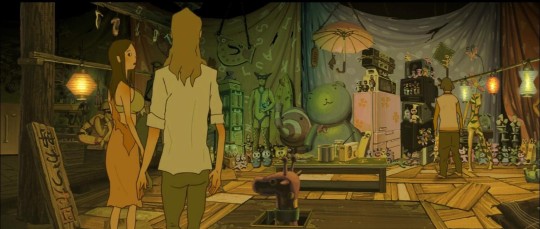
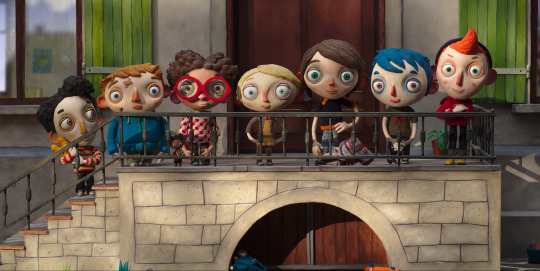
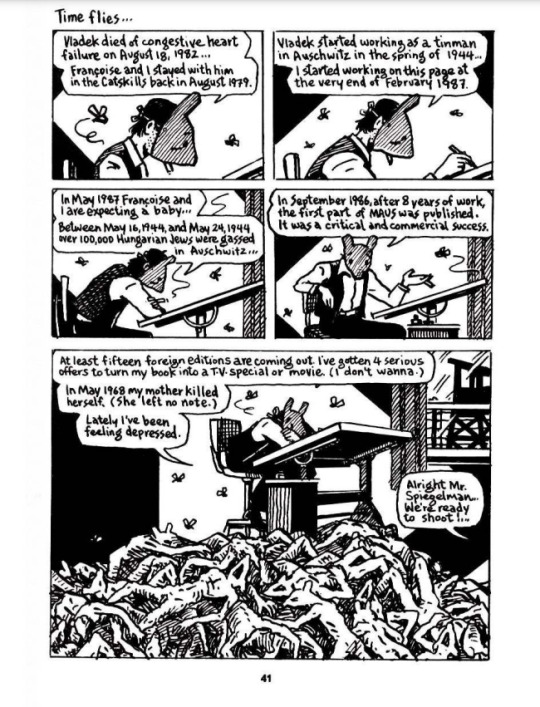
1- La Linea episode 3 by Osvaldo Cavandoli
2-La Bayadère choreographed by Marius Petipa
3-Mind Game by Masaaki Yuasa
4-Ma vie de courgette by Claude Barras
5-Maus part II by Art Spiegelman page 41
introduction video: https://drive.google.com/file/d/1aXq6BaKGpxMfHL2tFXEiGMS9w6UG4_FJ/view?usp=sharing
0 notes
Video
youtube
Tchaikovsky: Swan Lake - The Kirov Ballet
Swan Lake is a ballet composed by Pyotr Ilyich Tchaikovsky in 1875–76. It is one of the most popular and beloved ballets in the world. The ballet is based on a Russian folk tale about a princess named Odette who is transformed into a swan by an evil sorcerer's curse. The only way to break the curse is for a man to swear eternal love to Odette.
The ballet has been choreographed by many different choreographers, including Marius Petipa, Lev Ivanov, and Rudolf Nureyev. The most famous production of the ballet is the one by the Bolshoi Ballet in Moscow.
Swan Lake is a story of love, betrayal, and redemption. It is a ballet that has been enjoyed by audiences of all ages for over 100 years.
Here are some of the reasons why Swan Lake is so popular:
The music is beautiful and memorable. Tchaikovsky's score is one of the most famous in the world. It is full of melodies that are instantly recognizable and that have been used in many popular films and television shows.
The choreography is beautiful and expressive. There are many iconic moments in Swan Lake, such as the White Swan pas de deux and the Black Swan pas de deux. The choreography is both technically demanding and emotionally engaging.
The story is timeless and universal. The story of Swan Lake is a story of love, betrayal, and redemption. It is a story that has been told for centuries and that continues to resonate with audiences of all ages. If you have never seen Swan Lake, I highly recommend seeing it. It is a ballet that is sure to leave you breathless.
1 note
·
View note
Text
HBSO welcomes Christmas with classical ballet The Nutcracker
HBSO welcomes Christmas with classical ballet The Nutcracker
HOLIDAY FAVOURITE – Classical ballet The Nutcracker will be restaged at the HCM City Opera House on December 9, 10 and 11 to welcome Christmas. Photo courtesy of HBSO
HCM City – The HCM City Ballet Symphony Orchestra (HBSO) will bring classical ballet The Nutcracker back on stage on December 9, 10 and 11 to welcome the Christmas season.
The ballet was originally choreographed by Marius Petipa…
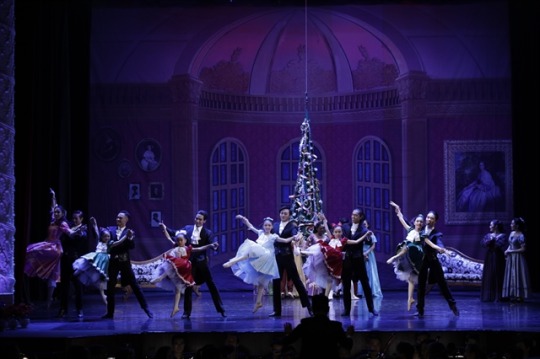
View On WordPress
0 notes
Photo
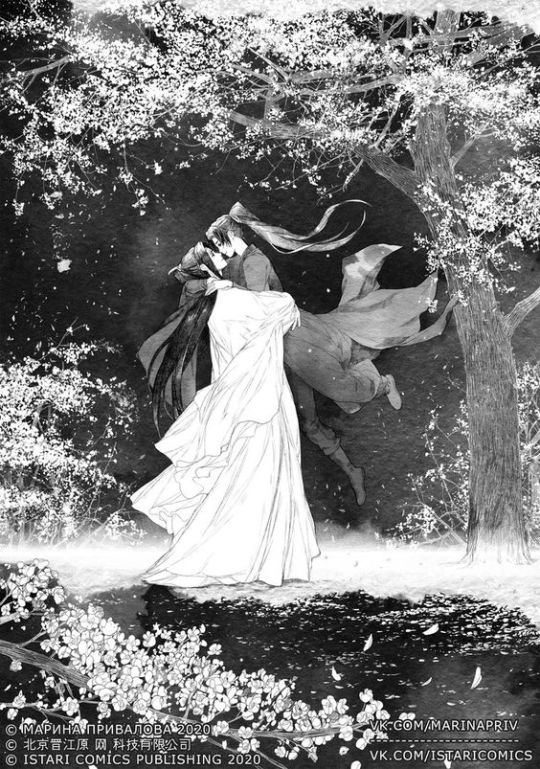
Europe's surprise that so unusual an idea as universal peace should come out of "semi-barbaric” Russia betrayed its lack of awareness of the richly creative culture which was flourishing there. The early years of Nicholas's reign were a period of such glittering intellectual and cultural achievement that they are known as the “Russian Renaissance” or the “Silver Age.” The ferment of activity and new ideas included not only politics but philosophy and science, music and art. In literature, Anton Chekov was writing the plays and short stories which would become world classics. In 1898, Constantine Stanislavsky first opened the doors of the famous Moscow Art Theatre, and its second play, Chekov's The Sea Gull, written in 1896, determined its success. Thereafter the appearance of Uncle Vanya (1899) and The Cherry Orchard (1904) confirmed the arrival of a new concept of naturalistic acting and a new era in the history of the theatre. In 1902, Stanislavsky directed The Lower Depths, a grimly realistic play by Maxim Gorky, hitherto known primarily for his massive novels. In Kiev, from 1900 to 1905, Sholom Aleichem, who had already lost a fortune trading on the grain and stock exchanges, was devoting himself entirely to writing in Yiddish the scores of short stories which have made him known as the “Jewish Mark Twain.” In philosophy, Vladimir Solov'ev, the preeminent religious philosopher and poet, had begun publishing his works in 1894. In 1904, the poems of Solov'ev's famous disciple Alexander Blok began to appear. At the Institute of Experimental Medicine in St. Petersburg, Ivan Pavlov, one of a group of Russian scientists making significant advances in chemistry and medicine, was conducting the experiments in physiology which won him a Nobel Prize in 1904. Russian painting was in transition. Ilya Repin, then a professor of historical painting at the St. Petersburg Academy of Fine Arts, was crowning a career of painting the great historical scenes of Russia's past. Victor Vasnetsov and Michael Nesterov had gone back even further and were attempting to re-create medieval religious art. Meanwhile, a rank of younger artists was responding excitedly to exhibitions in Russia of Cézanne, Gauguin and Picasso. Serov, influenced by the French Impressionists, painted evocative portraits of many contemporary Russians including, in 1900, the Tsar. In 1896, Vassily Kandinsky, a lawyer in Moscow, gave up his career and left Russia to begin painting in Munich. In 1907, Marc Chagall arrived in St. Petersburg to study with the famous contemporary painter Lev Bakst. At the Imperial Ballet, Marius Petipa was in the midst of a halfcentury reign as choreographer which would last until he resigned in 1903. In richly magnificent succession, he staged sixty major ballets, among them Tchaikovsky's Swan Lake, Nutcracker and Sleeping Beauty. It was Petipa who thrust onto the stage the glittering parade of Russian dancers which included Mathilde Kschessinska, Tamara Karsavina, Anna Pavlova and Vaslav Nijinsky. Even today, the great ballet companies of the world are measured for excellence against the standards set by Petipa. In 1899, Serge Diaghilev founded the influential journal The World of Art and editorially began to criticize Petipa's conservative style. In 1909, Diaghilev, with a daring new choreographer, Michael Fokine, founded the Ballet Russe in Paris and took the world by storm.
At the Imperial Ballet, Marius Petipa was in the midst of a halfcentury reign as choreographer which would last until he resigned in 1903. In richly magnificent succession, he staged sixty major ballets, among them Tchaikovsky's Swan Lake, Nutcracker and Sleeping Beauty. It was Petipa who thrust onto the stage the glittering parade of Russian dancers which included Mathilde Kschessinska, Tamara Karsavina, Anna Pavlova and Vaslav Nijinsky. Even today, the great ballet companies of the world are measured for excellence against the standards set by Petipa. In 1899, Serge Diaghilev founded the influential journal The World of Art and editorially began to criticize Petipa's conservative style. In 1909, Diaghilev, with a daring new choreographer, Michael Fokine, founded the Ballet Russe in Paris and took the world by storm. In the superlative music conservatories of St. Petersburg and Moscow, an unbroken succession of famous teachers passed their art to talented pupils. Nicholas Rimsky-Korsakov was the conductor of the St. Petersburg Symphony. While writing his own magnificent Golden Cockerel, he was instructing a youthful Igor Stravinsky, whose brilliantly original ballet scores written for Diaghilev, Firebird (1910), Petrushka (1911) and Rite of Spring (1913), were to have gigantic influence on all twentieth-century music. Later, in 1914, another of Rimsky-Korsakov's pupils, Serge Prokoviev, was to graduate from the conservatory. Among the violinists and pianists trained in Imperial Russia were Serge Rachmaninov, Vladimir Horowitz, Efrem Zimbalist, Mischa Elman and Jascha Heifetz. Serge Koussevitsky conducted his own symphony orchestra in Moscow. In 1899, the matchless basso Fedor Chaliapin made his debut and thereafter dominated the opera stage. Across Russia, people flocked to hear music and opera. Kiev, Odessa, Warsaw and Tiflis each had its own opera company with a season of eight to nine months. St. Petersburg alone had four opera houses. In 1901, Tsar Nicholas built one of these, the Narodny Dom or People's Palace. Believing that ordinary Russians should have an opportunity to savor the best in national music and drama, Nicholas had constructed a vast building which included theatres, concert halls and restaurants, with admission fees of only twenty kopecks. In time, the best orchestras and the leading actors and musicians appeared there. St. Petersburg society, enjoying the flavor of something new, trooped to follow.
- Nicholas and Alexandra, Robert K. Massie.
0 notes
Photo





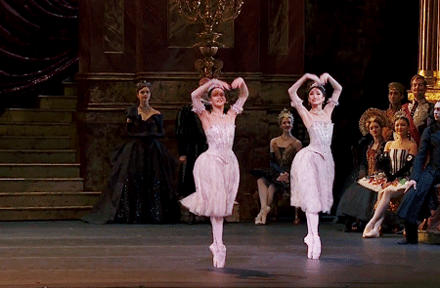




TOP TEN BALLETS:
#1 Swan Lake (choreographed by Marius Petipa)
327 notes
·
View notes
Text



2/11 of the Raymonda variations series:
Act 1, Scene 2 - Pas de Châle variation
“Raymonda (Russian: Раймонда) is a ballet in three acts, four scenes with an apotheosis, choreographed by Marius Petipa to music by Alexander Glazunov, his Opus 57. It was first presented by the Imperial Ballet at the Imperial Mariinsky Theatre on 19 January [O.S. 7 January] 1898 in Saint Petersburg, Russia. The ballet was created especially for the benefit performance of the Italian ballerina Pierina Legnani, who created the title role.” - from Wikipedia
#ballerina#ballet#pointe shoes#dance gif#dancer#dance#la scala#ballet variation#imperial ballet#imperial russia#olesya novikova#raymonda#raymonda ballet#pas de chale#marius petipa#glazunov#ballet gif#Raymonda variations series
5 notes
·
View notes
Text


Viktoria Tereshkina as Raymonda and Vladimir Shklyarov as Jean de Brienne, "Raymonda" music by Alexander Glazunov, choreography by Marius Petipa (1898) revised version by Konstantin Sergeev (1948) with choreographic fragments by Fyodor Lopukhov, set and costume design by Simon Virsaladze, Mariinsky Ballet, Saint Petersburg, Russia (October 7)
Photographer Natasha Razina
5 notes
·
View notes
Photo

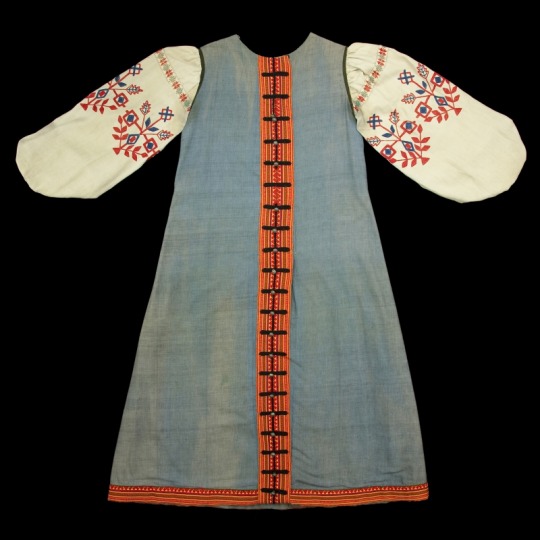

The exhibition “Russian operas, at the dawn of the Ballets Russes” presents 130 costumes made for the masterpieces of Russian opera (Boris Godunov, Kovantchina, Ivan the Terrible, Snegourotchka) presented in Paris between 1908 and 1913, for the most part by Diaghilev, then reused until the middle of the 20th century at the Opéra de Paris. Costume sketches, work documents, iconographic sources of inspiration and photographs are also included.
These costumes, ranging from historic magnificence to an unequalled modernity, all come from the Opéra National de Paris, where they arrived through the flukes of history, the successes of productions and the failures of businesses, thanks to purchases from theatre houses (such as the Bolchoi) or from companies (such as those of Serge Diaghilev and Sir Thomas Beecham). They are preserved today either in the collections of the Bibliothèque-Musée de l’Opéra, BNF, or at the CNCS or also at the Nouveau Musée National de Monaco. The entire range of opera characters, historical or from legends, of Mussorgsky and Rimsky-Korsakov are represented in this collection: tsars, boyars, guards, and above all the common people of Russia, the great protagonists of Russian opera.
https://www.cncs.fr/%E2%80%9Crussian-operas-dawn-ballets...
The Ballets Russes Company, under the direction of impresario Serge Diaghilev, had a major impact on the nature of ballet in the western world from the early years of the 20th Century. Employing the most talented and creative dancers, choreographers, designers and composers, the company created spectacles of sound, colour and movement, often with an oriental or folk tale theme, that they toured throughout Europe and America.
In 1921 Diaghilev mounted ‘The Sleeping Princess’ based on the Russian Mariinsky Theatre’s ballet ‘The Sleeping Beauty’ of 1890, with Tchaikovsky’s music and Marius Petipa’s choreography, slightly adapted, and new costumes and sets by Léon Bakst. It opened on November 2nd, 1921 at the Alhambra Theatre in London with the intention of a long run; however, it was not a success and closed after a hundred and fourteen performances, having had insufficient audiences to cover the expenses of numerous costumes and ambitious sets. The costumes were impounded to cover Diaghilev’s debts to the theatre, and went into storage.
https://www.thejohnbrightcollection.co.uk/.../ballets.../
5 notes
·
View notes
Text
Vaslav Nijinsky Masterpost
WIP
1894
amateur Hopak production in Odessa
Imperial Ballet School
supporting parts in classical ballets such as Faust, as a mouse in The Nutcracker, a page in Sleeping Beauty and Swan Lake
command performances in front of the Tsar of Paquita, The Nutcracker and The Little Humpbacked Horse
selected by the great choreographer Marius Petipa to dance a principal role in what proved to be the choreographer's last ballet, La Romance d'un Bouton de rose et d'un Papillon. The work was never performed due to the outbreak of the Russo-Japanese War.
The 1905 annual student show included a pas de deux from The Persian Market, danced by Nijinsky and Sofia Fedorova. Oboukhov amended the dance to show off Nijinsky's abilities, drawing gasps and then spontaneous applause in the middle of the performance with his first jump.
In 1906, he danced in the Mariinsky production of Mozart's Don Giovanni, in a ballet sequence choreographed by Michel Fokine. He was congratulated by the director of the Imperial Ballet and offered a place in the company although he was a year from graduation. Nijinsky chose to continue his studies. He tried his hand at choreography, with a children's opera, Cinderella, with music by another student, Boris Asafyev. At Christmas, he played the King of the Mice in The Nutcracker. At his graduation performance in April 1907, he partnered Elizaveta Gerdt, in a pas de deux choreographed by Fokine. He was congratulated by prima ballerina Mathilde Kschessinska of the Imperial Ballet, who invited him to partner her. His future career with the Imperial Ballet was guaranteed to begin at the mid-rank level of coryphée, rather than in the corps de ballet. He graduated second in his class, with top marks in dancing, art and music.
Nijinsky spent his summer after graduation rehearsing and then performing at Krasnoe Selo in a makeshift theatre with an audience mainly of army officers. These performances frequently included members of the Imperial family and other nobility, whose support and interest were essential to a career
Imperial Russian Ballet
He appeared with Sedova, Lydia Kyasht and Karsavina. Kchessinska partnered him in La Fille Mal Gardée, where he succeeded in an atypical role for him involving humour and flirtation. Designer Alexandre Benois proposed a ballet based upon Le Pavillon d'Armide, choreographed by Fokine to music by Nikolai Tcherepnin. Nijinsky had a minor role, but it allowed him to show off his technical abilities with leaps and pirouettes. The partnership of Fokine, Benois and Nijinsky was repeated throughout his career. Shortly after, he upstaged his own performance, appearing in the Bluebird pas de deux from the Sleeping Beauty, partnering Lydia Kyasht. The Mariinsky audience was deeply familiar with the piece, but exploded with enthusiasm for his performance and his appearing to fly, an effect he continued to have on audiences with the piece during his career.[18]
Undated
The Pharaoh's Daughter
Eunice
L'Oiseau d'Or
Mariinsky Theatre
1906
Don Giovanni (professional debut) (Anna Pavlova, Nijinsky)
1907
Le Pavillon d'Armide (Pavlova, Nijinsky, Pavel Gerdt)
1908
Le Roi Candaule
1909
1910
Le Talisman
1911
Giselle
Ballets Russes
1909
Le Pavillon d'Armide (Vera Karalli, Nijinsky, Mikhail Mordkin)
Prince Igor
Le Festin (suite of dances)
Les Sylphides (Théâtre du Châtelet, Paris) (Tamara Karsavina, Nijinsky, Pavlova, Alexandra Baldina)
Cléopâtre✅ (cast as the favourite slave of Cleopatra)
1910
Carnaval✅
Schéhérazade✅
Giselle✅
Les Orientales✅
July - L'Oiseau de feu✅
an orchestration of Grieg's Kobold, Op. 71, no. 3 for a charity ball dance
1911
Le Spectre de la rose✅
Narcisse✅
Sadko
Petrushka✅
Swan Lake
London - Royal Opera at Covent Garden - Season of Russian Ballet (22 July 1911) [x]
Le Pavillon d'Armide (as L'Esclave d'Armide)
Scheherazade (as The favourite Negro of Zobéide)
Les Sylphides (as Mazurka, Valse, and Valse Brillante)
1912
L'après-midi d'un faune✅
Daphnis et Chloé
Le Dieu bleu✅
Thamar
1913
Jeux✅
Le sacre du printemps✅
Tragédie de Salomé
1914
Les Papillons
La légende de Joseph
Le coq d'or
Le rossignol
Midas
2 March 1916 Saison Nijinsky (The Palace Theatre; London, England)
Les Sylphides
Le Spectre de la Rose
1915
Soleil de Nuit
1916
14 April 1916 Les Sylphides & Papillon (Metropolitan Opera)✅
Las Meninas
Kikimora
Till Eulenspiegel✅
2 notes
·
View notes
Photo

Ballets of Marius Petipa: Don Quixote
Natalia Osipova in Teatro Alla Scala’s production.
Don Quixote is very loosely based on Miguel de Cervantes’ novel, focused mainly on Don Quixote’s journey through Spain and the queen of his dreams, Dulcinea. His travels take him to a small town where he encounters a young woman named Kitri and her love Basilio. Lorenzo, Kitri’s father, refuses to allow the lovers to marry, instead promising her to a nobleman named Gamache. Don Quixote sees Kitri and believes she is the woman of his dreams, Dulcinea. During a rowdy party, Kitri and Basilio escape and run away to be married, with Lorenzo and Gamache following behind. Don Quixote finally sees Kitri is not Dulcinea and he feels a deep need to protect her and her lover which is why he mistakes a windmill as a giant kidnapping Kitri, attacks it, and falls into a deep sleep. He is taken to a dream land where he sees Kitri and Dulcinea merge into one, but is reminded once he wakes up he promised to ensure Kitri and Basilio’s happiness. At a tavern, Lorenzo and Gamache catch up to Kitri and Basilio. Basilio fakes a suicide because he cannot live without his beloved and Kitri convinces Don Quixote to “marry” her and Basilio after his death. However, since he was not dead, they were successful in marriage! Act 3 is a celebration of their wedding, with the famous pas de deux as the crowning glory.
Petipa was not the first, nor last, person to create a Don Quixote ballet. The first production we have record of is by Franz Hilverding in 1740. The first time Don Quixote was created in Russia was in 1808, choreographed by Charles Didelot and music by Frederick Venua at the Imperial Ballet (Mariinsky) Theatre. Petipa’s first version debuted at the Bolshoi Theatre in 1869 to music composed by Ludwig Minkus. Petipa then took his ballet to the Bolshoi Kamenny Theatre in Saint Petersburg in 1871, creating an almost entirely new ballet. He was first choreographer to turn Kitri/Dulcinea into a dual role and instead of Basilio faking his suicide, Kitri threatened to legitimately kill herself to make the ballet more dramatic. This version lasted until Alexander Gorsky created the version of the ballet we know and love today at the Bolshoi Theatre in 1900.
Currently Don Quixote is performed worldwide with each ballet company having their own production, however famous ones include Carlos Acosta’s for the Royal Ballet and Rudolf Nureyev’s whose choreography is used at multiple companies including Teatro Alla Scala and the Stanislavski Nemirovich-Danchenko Theatre in Moscow. Mikhail Baryshnikov staged his own production at the American Ballet Theatre which was recorded during a live performance with Cynthia Harvey. During this recording, the film crew messed up and did not capture the famous pas de deux and finale, so the entire company stayed and reperformed the piece. The audience stayed as well and gave a standing ovation. You can watch that recording here.
#ballets of marius petipa#don quixote#natalia osipova#teatro alla scala#molly gif#ballet#ballerina#prima ballerina#dance dancer#gif#my gif#ballet gif
31 notes
·
View notes